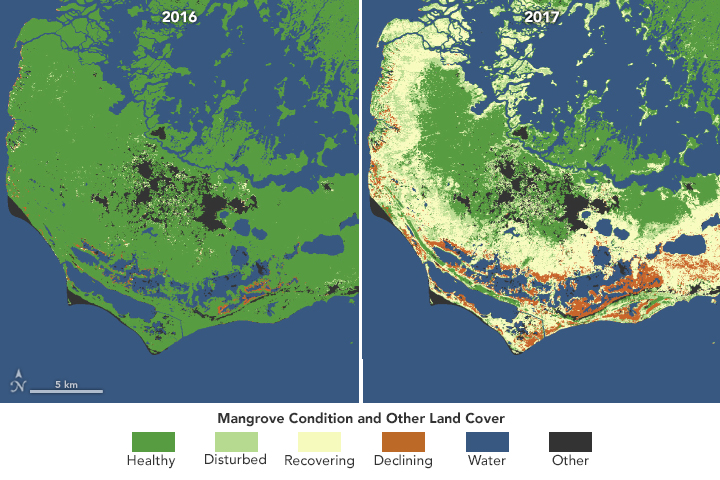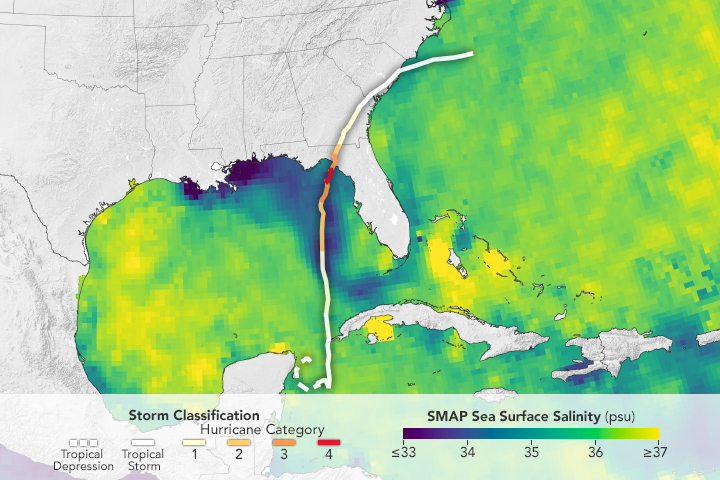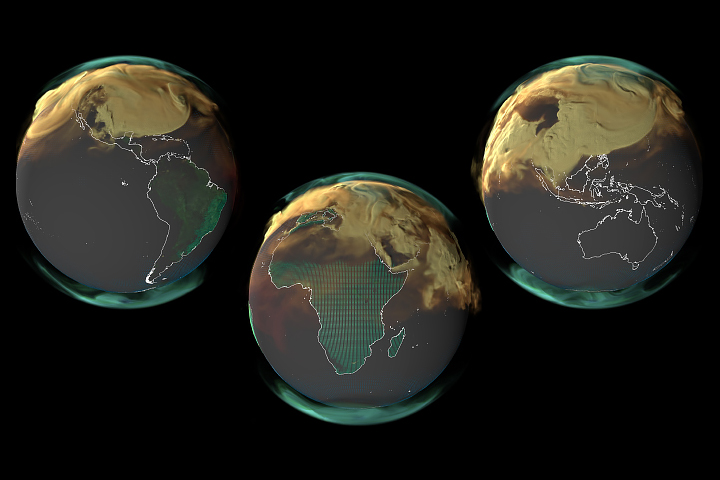- Home
- Missions
- Data
- Communications
- People
- The Earth Observer Newsletter




Recent Imagery
You will be directed to the NASA Visible Earth webpage when you select Images by Mission below, or click on the images at right that are randomly generated to represent four out of all possible topics.
You are here
CloudSat
Status:
Completed
Mission Category:
Earth System Science Pathfinder Program, A-Train
Launch Date: April 28, 2006
Launch Location: Vandenberg Air Force Base, CA
Designed Life: April 28, 2009
CloudSat is studying clouds in detail to better characterize the role they play in regulating Earth's climate. CloudSat is providing the first direct, global survey of the vertical structure and overlap of cloud systems and their liquid and ice-water contents. Data returned should lead to improved cloud representations in atmospheric models, which should help improve the accuracy of weather forecasts and climate predictions made using these models.
NOTE: CloudSat radar operations ceased as planned on December 20, 2023 at 11:10 UTC, bringing to an end a rich 17 year and 8 month history of science observations. The spacecraft will now conduct a sequence of orbit lowers leading up to its passivation in April 2024.
Key CloudSat Facts
| Mission/Portal Page: | http://science.nasa.gov/missions/cloudsat/ |
|---|---|
| Launch Vehicle: | Delta II rocket |
| Altitude:Distance from sea level. | 705km |
| Inclination: | 98.2° |
| Local Node:Approximate time, at the equator when vehicle is directly overhead. | 1:30 p.m. |
| Origination: | Joint with Canada |
| Instruments: |
CPR (Cloud Profiling Radar) |
| Principal Investigator(s): |
Graeme Stephens Deb Vane |
Related Publications:
- A-Train Fact Sheet (Fact Sheets - 263.74 KB)
- CloudSat and CALIPSO (Mission Brochures - 1.32 MB)
- CALIPSO/CloudSat/GRACE (Science Writers' Guide - 2.6 MB)
Relevant Science Focus Areas:
- Climate Variability and Change
- Weather Water and Energy Cycle
Relevant Science Questions:
- How does the Earth system respond to natural and human-induced changes?
- How is the global Earth system changing?
Science Goals:
- Profile the vertical structure of clouds: Understanding the vertical structure of clouds is fundamentally important to improving our understanding of how clouds affect both the local and large-scale environment.
- Measure the profiles of cloud liquid water and ice water content: These two quantities-predicted by cloud process and global scale models alike-determine practically all other cloud properties, including precipitation and cloud optical properties.
- Measure profiles of cloud optical properties: These measurements, when combined with water and ice content information, provide critical tests of key cloud process parameterizations and enable the estimation of flux profiles and radiative heating rates through the atmospheric column.
Related Applications:
- Aviation
- Weather Prediction

